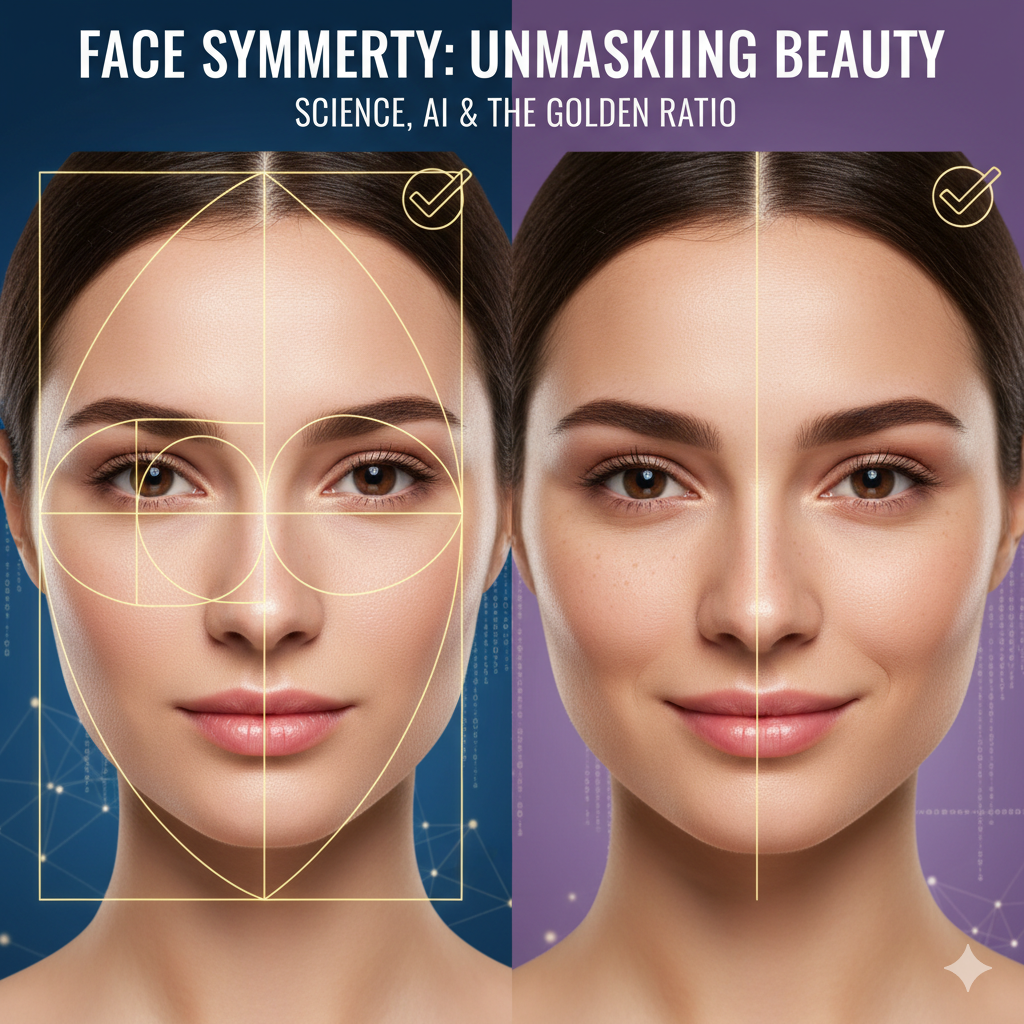Introduction to Mewing
Mewing, a term coined by Dr. John Mew, refers to a technique that involves positioning the tongue against the roof of the mouth to influence facial structure. This practice has gained substantial attention and popularity, especially within online communities dedicated to aesthetics and self-improvement. Advocates of mewing believe that consistent practice can lead to noticeable changes in facial features, such as a more defined jawline and improved facial symmetry.
The principle behind mewing is grounded in the science of oral posture. By maintaining the tongue in a specific position, proponents argue that it can exert gentle pressure on the maxilla (the upper jaw), encouraging it to grow forward and wide. This, in turn, can have a cascading effect on the rest of the facial structure, potentially leading to a more harmonious and balanced appearance.
The rise of social media and online forums has played a pivotal role in the dissemination of mewing techniques. Platforms such as YouTube, Reddit, and Instagram are replete with testimonials, instructional videos, and before-and-after photos that document the purported benefits of this practice. This digital proliferation has sparked curiosity and debate, with many individuals eager to explore non-invasive methods to enhance their facial aesthetics.
While the concept of mewing is relatively simple, its execution requires diligence and consistency. Practitioners are advised to keep their tongues pressed against the palate, maintain proper oral posture, and ensure their teeth are slightly apart. Over time, this practice is believed to promote positive changes in facial structure, though results may vary based on individual factors such as age, genetics, and adherence to the technique.
As we delve deeper into the specifics of how mewing can potentially shorten or lengthen the face, it is essential to understand the foundational principles of this technique and the reasons behind its burgeoning popularity.
The Science Behind Mewing
Mewing is a practice rooted in the principles of orthodontics and craniofacial anthropology, primarily focusing on the positioning of the tongue to influence the maxilla, or upper jaw. At its core, mewing involves maintaining the tongue flat against the roof of the mouth, which is believed to exert consistent force on the maxilla, encouraging it to move upward and forward. This movement can potentially lead to changes in the overall facial structure, resulting in a more defined jawline and improved facial symmetry over time.
Anatomically, the maxilla is a central component of the facial skeleton, playing a critical role in the development and alignment of facial features. The hypothesis behind mewing is that the tongue’s placement can stimulate growth and remodeling of the maxilla, which in turn affects adjacent structures such as the mandible (lower jaw) and the nasal cavity. This can contribute to a more harmonious facial profile and potentially mitigate issues related to improper bite alignment and breathing difficulties.
Several scientific studies and expert opinions lend credence to the potential benefits of mewing. For instance, a study published in the ‘Journal of Orthodontics’ highlights the influence of tongue posture on craniofacial development, suggesting that a proper tongue position can positively impact facial growth patterns. Additionally, Dr. John Mew, a prominent orthodontist and the proponent of orthotropics, has extensively documented cases where patients exhibited noticeable improvements in facial aesthetics and dental alignment through consistent practice of mewing techniques.
While more rigorous, long-term studies are needed to fully validate the efficacy of mewing, the existing body of evidence supports the notion that tongue posture can play a significant role in shaping the face. Many orthodontic professionals advocate for incorporating proper tongue positioning as part of comprehensive facial growth and orthodontic treatments, underscoring its potential as a non-invasive method to enhance facial structure.
Techniques and Practices
Mewing, a technique gaining popularity for its potential to influence facial structure, requires proper practice to yield the desired results. The core principle of mewing centers around the correct tongue placement on the roof of the mouth. To begin, relax your tongue and press it flat against the palate, ensuring that the entire tongue makes contact from the tip to the back. This posture should be maintained consistently throughout the day, even when swallowing.
Correct posture is another crucial aspect of effective mewing. Align your head, neck, and spine properly by maintaining a straight back and keeping your head level. This alignment supports the correct tongue posture and enhances the overall impact of mewing on your facial structure. Additionally, practice nasal breathing as much as possible, as it complements the mewing technique and contributes to better overall health.
Consistency is key when it comes to mewing. Integrate this practice into your daily routine by consciously reminding yourself to maintain the correct tongue posture and head alignment. Set reminders on your phone or use sticky notes around your living and working spaces as prompts. Regular practice over an extended period is essential to observe noticeable changes in your facial structure.
While practicing mewing, be mindful of common mistakes that can hinder progress. Avoid pressing the tongue too hard against the palate, which can cause discomfort and potential injury. Ensure that the tongue remains relaxed and flat, rather than curled or bunched up. Additionally, do not clench your jaw or teeth, as this can lead to tension and misalignment.
Incorporating mewing into everyday activities can make it easier to practice consistently. Combine mewing with routine tasks such as commuting, working at a desk, or watching television. By integrating mewing into your daily life, you increase the likelihood of maintaining the correct posture and reaping the benefits over time.
Mewing for a Shorter Face
Mewing, a technique popularized by Dr. John Mew, involves proper tongue posture to optimize facial structure. This practice is particularly beneficial for individuals seeking a shorter face, as it can improve the position of the maxilla and enhance the jawline. The maxilla, or upper jaw, plays a crucial role in overall facial aesthetics. By positioning the tongue against the roof of the mouth, mewing encourages the maxilla to move upward and forward, leading to a more harmonized and shorter facial appearance.
Many enthusiasts have shared their success stories, showcasing significant transformations attributable to consistent mewing. Before-and-after pictures often highlight more prominent cheekbones, a defined jawline, and an overall improvement in facial symmetry. These visual testimonials reinforce the potential of mewing to effectuate noticeable changes, provided the technique is executed correctly and diligently.
The timeframe for visible results from mewing varies among individuals. Factors such as age, genetic predisposition, and the consistency of practicing correct tongue posture play a significant role in the outcome. While some may observe changes within a few months, others might require a year or more to see substantial differences. It is essential to remain patient and committed to the process, understanding that mewing is a gradual approach to facial enhancement.
Additionally, mewing should be complemented by other healthy habits to maximize its benefits. Proper dental hygiene, adequate hydration, and a balanced diet can all contribute to more effective and lasting results. Consulting with a professional, such as an orthodontist or a maxillofacial specialist, can provide personalized guidance and ensure that mewing is performed correctly.
In summary, mewing offers a promising, non-invasive method for those looking to achieve a shorter face. By improving the maxilla’s position and enhancing the jawline, this technique can lead to significant aesthetic improvements. With patience, consistency, and the right approach, individuals can experience the transformative potential of mewing.
Mewing for a Longer Face
Mewing is a technique that has gained significant attention for its potential to reshape facial structure, including the lengthening of the face. By promoting the forward growth of the maxilla, this practice can improve overall facial harmony. The underlying principle of mewing involves maintaining proper tongue posture against the roof of the mouth, which in turn encourages better maxillary development and facial structure.
When practiced consistently, mewing can lead to subtle but noticeable changes in the face over time. Testimonials from individuals who have incorporated mewing into their daily routines often highlight improvements in facial symmetry and a more elongated face. For instance, many practitioners have reported that their faces appear more balanced and less round, contributing to a more aesthetically pleasing profile.
Visual evidence further supports these claims. Before-and-after photos show incremental changes, such as a more pronounced jawline and a less recessed midface, which contribute to the overall lengthening effect. These images can be particularly compelling, demonstrating the tangible benefits of mewing when practiced diligently.
It is important to manage expectations regarding the timeline for achieving a longer face through mewing. Changes are gradual and can take several months to years to become noticeable. The rate of progress is influenced by factors such as age, genetic predisposition, and the consistency of practicing proper tongue posture. For optimal results, it is recommended to combine mewing with other supportive practices, such as maintaining good dental health and proper nutrition.
Ultimately, while mewing offers promising potential for reshaping the face and promoting forward growth of the maxilla, it requires patience and commitment. Those considering this practice should be prepared for a long-term commitment and seek to understand that results will vary based on individual circumstances. By setting realistic expectations and following the technique diligently, individuals can work towards achieving a longer, more harmonious facial structure.
Complementary Practices
While mewing has garnered significant attention for its potential to alter facial structure, the practice can be considerably enhanced through complementary lifestyle changes. These supplementary measures not only support the principles of mewing but also contribute holistically to overall facial aesthetics and health.
A proper diet is foundational. Consuming a balanced diet rich in essential nutrients like vitamins, minerals, and proteins can provide the necessary building blocks for healthy tissue development. Foods high in collagen, such as bone broth and leafy greens, can support skin elasticity and firmness. Hydration is equally crucial, as well-hydrated skin tends to be more resilient and less prone to sagging. Maintaining an anti-inflammatory diet, focusing on whole foods while avoiding processed items and excessive sugar, can further promote optimal facial health.
Facial exercises are another potent tool that can complement mewing. These exercises target various muscle groups in the face, helping to tone and strengthen them. Regularly engaging in facial workouts, such as cheek lifts, lip pulls, and jaw clenches, can enhance muscle definition and improve blood circulation. This practice not only supports the goals of mewing but also provides a natural lift to the face, potentially reducing the appearance of fine lines and wrinkles.
Good posture plays an integral role in the effectiveness of mewing. Consistently maintaining an upright posture with the head properly aligned can ensure that the tongue remains in the correct position against the roof of the mouth. Slouching or forward head posture can counteract the benefits of mewing, leading to imbalanced facial development. Therefore, being mindful of posture throughout the day, whether sitting, standing, or walking, is essential.
Integrating these complementary practices—proper diet, facial exercises, and good posture—can significantly amplify the benefits of mewing. By adopting a holistic approach, individuals can potentially achieve more pronounced and sustainable improvements in their facial structure and overall appearance.
Potential Challenges and Solutions
Starting with mewing can present several challenges for individuals aiming to reshape their facial structure. One of the most common difficulties is discomfort or soreness in the tongue and jaw muscles. This discomfort often arises from maintaining the correct tongue position, which involves pressing the tongue against the roof of the mouth consistently. For many, this can feel unnatural and tiring, particularly in the early stages of practice.
To alleviate this discomfort, it is essential to gradually build up the duration and intensity of mewing. Begin by holding the correct tongue position for shorter periods, and incrementally increase the time as your muscles adapt. Incorporating regular breaks can also help prevent excessive strain and promote muscle endurance over time.
Another challenge is the difficulty in consistently maintaining the correct tongue posture. It is easy to forget to keep the tongue in the desired position, especially during activities that require concentration, such as working or studying. To address this, setting reminders throughout the day can be beneficial. Simple techniques like setting alarms on your phone or placing sticky notes in visible areas can serve as effective prompts to recheck and adjust your tongue posture.
Motivation is another critical factor when adopting a new habit like mewing. The results are not immediate and can take several months to become noticeable. Therefore, staying motivated can be challenging. Engaging with a community of fellow mewers, either online or in person, can provide valuable support and encouragement. Sharing experiences, challenges, and progress with others can create a sense of camaraderie and accountability, which is crucial for long-term commitment.
Advice from experienced mewers and professionals can also be invaluable. Many recommend combining mewing with other facial exercises to enhance overall facial muscle tone and structure. Additionally, keeping a progress journal with before-and-after photos can help visualize improvements over time, reinforcing the benefits of persistence and dedication.
Conclusion and Final Thoughts
Mewing has gained considerable attention as a non-invasive technique purported to influence facial structure, potentially leading to either a shorter or longer appearance. Throughout this blog post, we have explored the mechanics behind mewing, including the proper tongue posture and its role in stimulating facial muscles and bones. By maintaining the correct positioning of the tongue against the roof of the mouth, individuals may see gradual changes in their facial contours.
The potential benefits of mewing can vary. For those seeking a more defined jawline or a reduction in facial length, consistent practice of proper tongue posture can be beneficial. Conversely, those aiming for a more elongated facial structure might also find mewing advantageous, as the technique encourages balanced muscle engagement and bone growth over time. It is essential to understand that results are not instantaneous and typically require persistent effort over months or even years.
Patience and diligence are crucial when embarking on a mewing journey. Regular practice, coupled with a mindful approach to posture and breathing, can amplify the effectiveness of mewing. It is also important to stay educated about the technique to ensure that it is being performed correctly, as improper practice may lead to suboptimal results or even discomfort.
Finally, while mewing offers an accessible method for potentially achieving desired facial changes, it should not replace professional medical advice. Individuals with specific health concerns or pre-existing conditions should consult with a healthcare provider before starting any new regimen. A professional can provide personalized guidance and ensure that mewing is a suitable practice for their unique circumstances.
In conclusion, mewing presents a fascinating area of exploration for those interested in non-surgical facial shaping. With commitment and proper technique, it holds the promise of contributing to facial aesthetics, whether one’s goal is a shorter or longer appearance.







